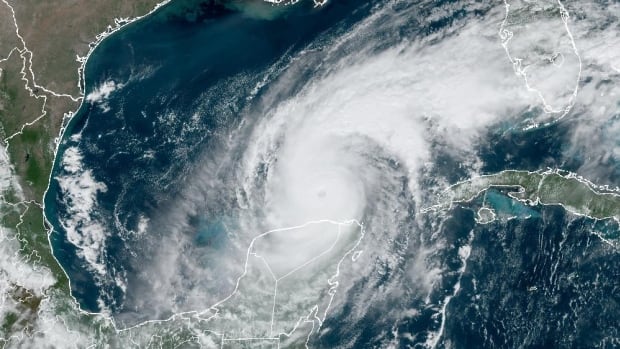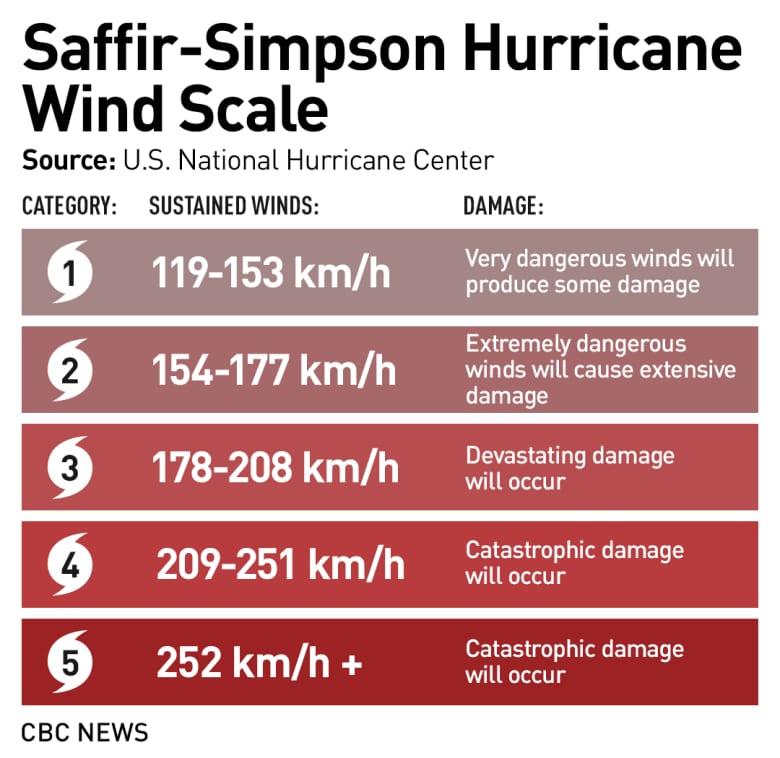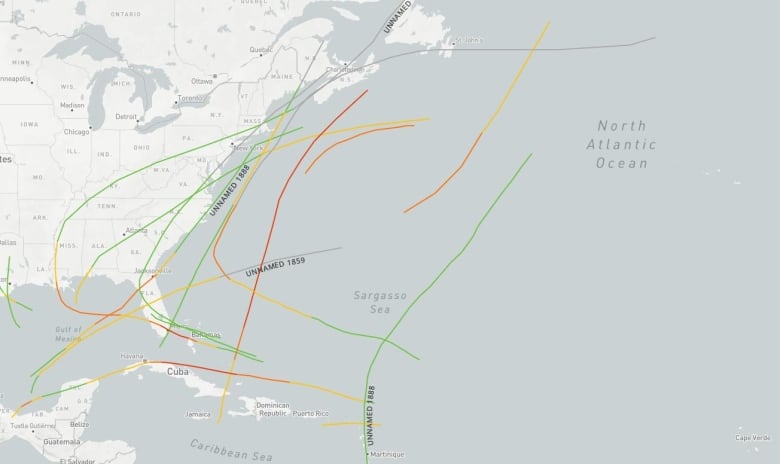
All eyes are on Florida as Hurricane Milton barrels toward the state that is still recovering after Hurricane Helene struck it two weeks ago.
As of Tuesday afternoon, Milton was a dangerous Category 4 on the Saffir-Simpson scale but could further strengthen before ultimately weakening as it makes landfall in western Florida. Even then, it is expected to remain a major hurricane, which is classified as a Category 3 or higher and means it has sustained winds of at least 178 km/h.
The current forecast has the hurricane making landfall some time Wednesday evening near Tampa Bay, an area that hasn’t been hit by a major hurricane since 1921.
How did we get here, and what can we expect?
Warmer waters, rapid intensification
The story of Milton begins in the Bay of Campeche in the Gulf of Mexico. On Saturday, it formed as a tropical storm, before jumping to a Category 1 hurricane, with sustained winds of 130 km/h, by 10 a.m. Sunday morning.
By Monday morning, it had upgraded to a Category 3, and by the afternoon it had jumped to a Category 5, which meant it had sustained winds of at least 252 km/h.

This sudden strengthening is called rapid intensification, and studies show that with climate change this is occurring more frequently.
In 2023, the rapid intensification of Hurricane Otis in the Pacific Ocean saw it barrel into the Acapulco region of Mexico, jumping from a meagre tropical storm to a Category 5 in 24 hours. Residents were unprepared and roughly 50 people died as a result.
And earlier this year, Hurricane Beryl also rapidly intensified in the Atlantic, jumping from a Category 1 to a Category 4 in just 24 hours.
The culprit? Unusually warm waters brought on by the burning of fossil fuels, a practice that is leading to climate change.
Brian McNoldy, a climatologist and a senior research associate at the University of Miami Rosenstiel School has been tracking the Gulf temperatures this summer, finding that they were their hottest on record in August. That unusual warmth has continued and has helped Milton to strengthen so fast.
Right before landfall, <a href=”https://twitter.com/hashtag/Milton?src=hash&ref_src=twsrc%5Etfw”>#Milton</a>’s inner core will pass over some of the warmest water of its entire journey: 30-31°C (86-88°F), which is 2-3°C (3.5-5.5) warmer than average for this time of year.<a href=”https://t.co/Id3wcCr25r”>https://t.co/Id3wcCr25r</a> <a href=”https://t.co/76vkyqP80F”>pic.twitter.com/76vkyqP80F</a>
—@BMcNoldy
“At 25 degrees [Celsuis], you’re not supporting a hurricane,” said Frédéric Fabry, a professor at McGill University’s oceanic and atmospheric sciences.
Inching up even a few degrees to 27 C, “you can intensify considerably more,” he said.
“Now we’re talking of 30 degrees in the Gulf of Mexico, and we expect these kinds of temperatures to become more of the norm in the future.”
Unusual track
Milton’s track is somewhat rare.
In fact, no one alive today has seen a hurricane follow this path. The last one to take a similar track was in 1888, a storm that is believed to have been a Category 2.
“Milton has formed in the Gulf of Mexico and is heading east, which is a bit unusual,” Fabry said. “Typically, hurricanes tend to track a bit more north, so that makes western Florida a bit more vulnerable in this particular case.”
However, Tampa was hit by a major hurricane in 1848, which is believed to have formed in the same region.

The U.S. National Hurricane Center is warning people in the area that the storm is a life-threatening situation for those in the region.
“Milton has the potential to be one of the most destructive hurricanes on record for west-central Florida,” they said in an update.
Multiple dangers
The threat with Milton is that powerful winds and storm surges are expected to occur outside the hurricane track.
“Milton’s wind field is expected to expand as it approaches Florida. In fact, the official forecast shows the hurricane and tropical-storm-force winds roughly doubling in size by the time it makes landfall,” the hurricane centre said in a forecast discussion Tuesday afternoon.
“Therefore, damaging winds, life-threatening storm surge, and heavy rainfall will extend well outside the forecast cone.”
Obviously, hurricane winds are a major threat, but it’s storm surges that pose the biggest threat to life.
“The number one threat is the storm surge,” said David Zierden, state climatologist at the Florida Climate Center.
“Hurricane Helene, just a few a couple weeks ago, provided record storm surge levels across Tampa Bay and a lot of West Florida, and people are still recovering from that.”
The hurricane centre is forecasting storm surges of three to 4.5 metres. To put that into perspective, people died by drowning during Hurricane Helene’s 1.5 to 2.5 metre storm surge.
“I can say without any dramatization whatsoever, if you choose to stay in one of those evacuation areas, you’re going to die,” Tampa Mayor Jane Castor told CNN on Monday night.